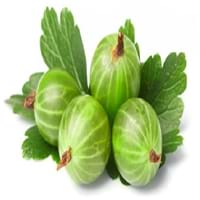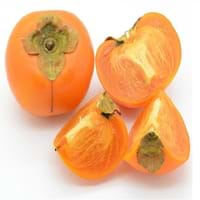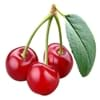Health Benefits
Arthritis prevention, Cancer prevention, Liver health, Scurvy treatment, Ulcer prevention
Cancer prevention, Heart care, Heat stroke treatment, Improves eye vision, Weight loss properties
General Benefits
Boosts immune system, Digestive aid, Eye care, Fights against infections, Improves blood circulation, Maintains healthy cholesterol level, Sore throat treatment, Treatment of common cold
Anti-inflammatory properties, Boosts immune system, Cures cough, Digestive aid, Fights against infections, Improves blood circulation
Skin Benefits
Anti-aging benefits, Brightens and lightens complexion, Reduces wrinkles, Treatment of acne
Anti-aging benefits, Brightens and lightens complexion, Reduces wrinkles
Hair Benefits
Prevents hair loss, Promotes longer and healthier hair, Treatment of dandruff
Promotes longer and healthier hair, Protects hair
Allergy Symptoms
Constipation, Diarrhea, Drop in blood pressure, Eczema, Facial swelling, Hives, Hoarseness, Itching, Itchy eyes, Nausea, Red rash, Redness of eyes, Runny nose, Sore eyes, Swelling of mouth, tongue or lips, Tingling sensation in mouth, Vomiting
Abdominal pains, Anaphylaxis, Inflammation
Side Effects
Gastric irritation
Diarrhoea, Might affect blood pressure level
Best Time to Eat
Best if taken as a breakfast (or empty stomach), As a snack in the late afternoon, Don't consume at night and before bed, Morning time (before lunch)
Along with meal, As a snack in the late afternoon, Don't consume at night and before bed, Morning time (before lunch)
Vitamin B5 (Pantothenic Acid)
Not Available
Vitamin C (Ascorbic Acid)
Vitamin K (Phyllochinone)
Not Available
Lutein+Zeaxanthin
Not Available
Calories in Fresh Fruit with Peel
Calories in Fresh Fruit without Peel
Not Available
Not Available
Calories in Frozen Form
Not Available
Not Available
Calories in Dried Form
Not Available
Calories in Canned Form
Not Available
Type
Berry, Tree fruit
Berry, Tree fruit
Season
Summer
Autumn, Winter
Varieties
Whinham's Industry, Green Hansa, Clark, Chataqua, Invicta, Keepsake, Lepaa Red, May Duke and Whitesmith
Fuyu, Jiro, Gosho, Suruga, Hiratanenashi, Hachiya, Aizumishirazu, Yotsumizo, Yokono, Costata, Ormond and Tamopan
Color
Green, Purple, Red, Yellow
Orange, Red, Yellow
Inside Color
Yellowish Green
Orange
Origin
Africa, Europe, South-West Asia
Burma, China, India, Japan
Soil Type
Loamy, Well-drained
Sandy loam, Well-drained
Climatic Conditions
Dry, Warm
Can tolerate wide range of climates
Facts about
- Traditionally, kids were told that babies were found under gooseberry bushes.
- They are also called 'fayberries' due to an ancient belief that fairies hid in gooseberry bushes to avoid danger.
- Unripe persimmons contain lots of tannin which is used to brew sake & to preserve wood in Japan.
- A small non-edible fruit of persimmon tree is crushed with water, the solution is painted on paper & used to repel mosquitoes.
Spirits
Yes
Not Available
Cocktails
Yes
Not Available
Top Producer
Germany
China
Other Countries
Austria, Czech Republic, Denmark, Hungary, Lithuania, Poland, Russia, Ukraine, United Kingdom
Azerbaijan, Brazil, Israel, Italy, Japan, Pakistan
Top Importer
Not Available
United States of America
Top Exporter
Not Available
Japan
Botanical Name
Ribes uva-crispa
Diospyros kaki
Synonym
Ribes grossularia
Not Available
Subkingdom
Tracheobionta
Tracheobionta
Division
Magnoliophyta
Magnoliophyta
Class
Magnoliopsida
Magnoliopsida
Subclass
Dillenhidae
Dillenhidae
Order
Saxifragales
Ericales
Family
Grossulariaceae
Ebenaceae
Species
R. uva-crispa
D. kaki
Generic Group
Saxifrage
Not Available
Difference Between Gooseberry and Japanese Persimmon
We might think that Gooseberry and Japanese Persimmon are similar with respect to nutritional value and health benefits. But the nutrient content of both fruits is different. Gooseberry and Japanese Persimmon Facts such as their taste, shape, color, and size are also distinct. The difference between Gooseberry and Japanese Persimmon is explained here.
The amount of calories in 100 gm of fresh Gooseberry and Japanese Persimmon with peel is 44.00 kcal and 70.00 kcal and the amount of calories without peel is Not Available and Not Available respectively. Thus, Gooseberry and Japanese Persimmon belong to and category.These fruits might or might not differ with respect to their scientific classification. The order of Gooseberry and Japanese Persimmon is Saxifragales and Ericales respectively. Gooseberry belongs to Grossulariaceae family and Japanese Persimmon belongs to Ebenaceae family. Gooseberry belongs to Ribes genus of R. uva-crispa species and Japanese Persimmon belongs to Diospyros genus of D. kaki species. Beings plants, both fruits belong to Plantae Kingdom.









